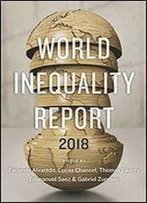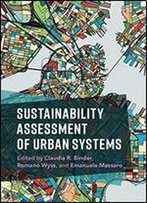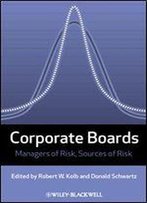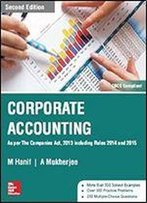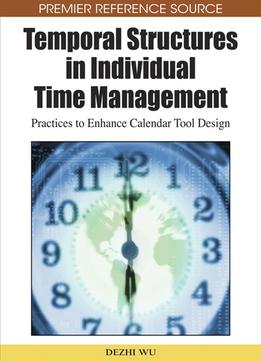
Temporal Structures In Individual Time Management: Practices To Enhance Calendar Tool Design
by Dezhi Wu /
2015 / English / PDF
4.7 MB Download
The association of personal time management research with calendar applications has remained a relatively under-researched area due to the complexity and challenges it faces. Temporal Structures in Individual Time Management: Practices to Enhance Calendar Tool Design covers the latest concepts, methodologies, techniques, tools, and perspectives essential to understanding individual time management experiences. Emphasizing personal temporal structure usage involving calendar tools, this book provides both qualitative and quantitative evidences and insights valuable for researchers and practitioners in enhancing current electronic calendar systems design and implementation. Table of Contents: Chapter I: Understanding Time and Its Relationship to Individual Time Management Quantitative vs. qualitative time Clock-based vs. event-based time Chronos vs. kairos time Linear vs. cyclical time Biotemporal, physiotemporal and sociotemporal time A conceptual research framework Conclusion References Chapter II: What are Temporal Structures? Chapter III: Time Management and Temporal Personalities Chapter IV: Calendar Tools: Current Practices, New Prototypes and Proposed Temporal Structure Designs Chapter V: Investigating Temporal Structure Usage in Individual Time Management Practices: Two In-depth Field Interviews Participants Procedure Findings from the interviews Types of calendar tools being used Types of temporal structures uncovered Calendar tool design implications References Chapter VI: Individual Time Management Profiles: Electronic Calendar Tool Selection, Use and Issues Chapter VII: Identifying What Constitutes the Quality of Individual Time Management and How Individuals Process Temporal Structure Information: A Survey Study Design The quality of individual time management Temporal structure information processing Effective time managers vs. ineffective time managers Research questions Proposing two sets of hypotheses: Bivariate and PLS hypotheses Bivariate hypotheses PLS Hypotheses Data Collection and Measures Conclusion References Chapter VIII: How Academics Exhibit Their Time Management Behaviors Through Various Temporal Structure Usage: Descriptive Analysis Results From A Large Survey Student sample Faculty sample Staff sample Construct independence Construct univariate analysis Construct normality test Conclusion Chapter IX: Who Are Effective Time Managers? Bivariate Correlation Analysis and Hypotheses Testing Chapter X: What Is The Relationship Between The Quality of Individual Time Management and Temporal Structure Usage? Building and Testing a Research Model Validation of the measurement model Testing temporal structure PLS models Research hypotheses summarization References Chapter XI: Input From Users: Personal Time Management Hints, Current Electronic Calendar Tool Difficulties and Desired Features Chapter XII: Relationship between Calendar Tool Design and Temporal Structure Usage: A Small Longitudinal User Study Chapter XIII: Conclusion, Contribution and Implications to Future Electronic Calendar Tool Design Chapter XIV: E-Scheduling Chapter XV: Management of Learning Space

